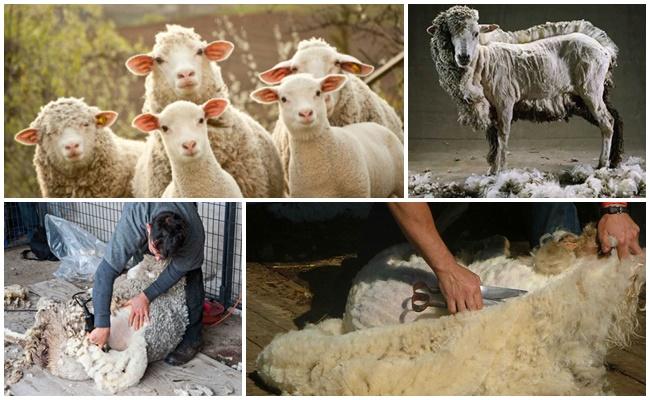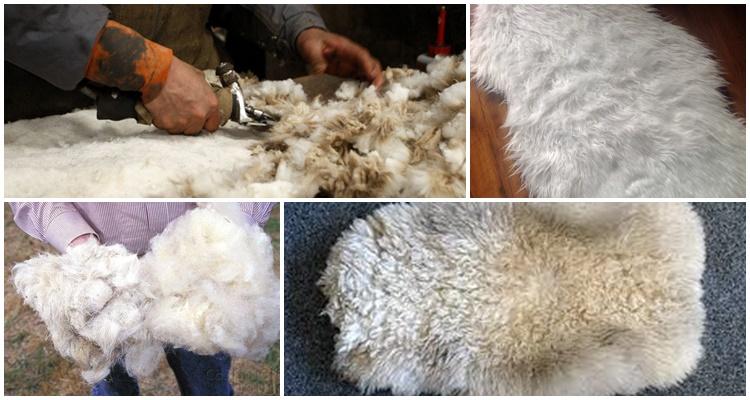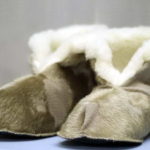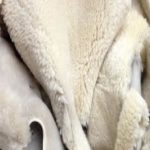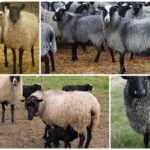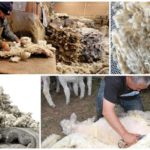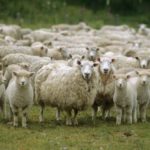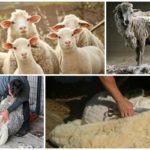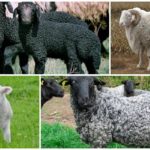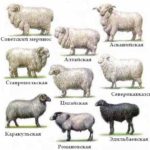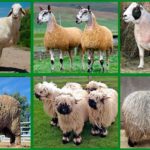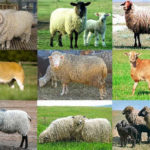Humanity domesticated sheep as one of the first farm animals because they provided almost everything that people needed to survive in difficult conditions. From them they received meat, milk, fat tail fat for food, wool and sheepskin for making warm clothes and blankets. Even today, sheep products are highly valued because they continue to be important for humans.
Wool
People began to domesticate and breed sheep, primarily because of their high-quality wool. It gave a chance to use not just primitive skins to create clothes, but thin, durable and very warm products.It can be said that the wool of sheep and other domestic animals gave birth to fashion, because the first fabrics made in ancient times were wool, and only much later were materials from plant fibers mastered.
Centuries of breeding and careful selection have led to the fact that wool obtained from different breeds of sheep has different characteristics. It can be rough, tough and very durable. But you can also find exceptionally thin, delicate and soft ones, which are used to create expensive exclusive products.
Based on thickness, which professionals call fineness, wool is divided into more than a dozen classes, starting with “very coarse” and ending with “extra fine.” This allows sheep wool to be used extremely widely - from creating elegant knitwear to thick outerwear, as well as for making durable felted materials - felt and felt.
Main characteristics of sheep wool:
- Hygroscopicity is the ability to absorb and retain moisture. Sheep wool can absorb up to 30% of moisture, while cotton fibers will retain no more than 8%.
- Heat retention. In sheep's wool, this quality is associated with the waviness, which creates air pockets that retain heat and make materials from it ideal for the cold season.
- The ability to form a thread, that is, to spin. The wavy structure of the fiber straightens when stretched and combed, and subsequently intertwines with other elements, twisting and forming a strong thread.
- The ability to fall off, forming a dense, but quite elastic and very durable material. It is achieved due to the presence of scales on the surface of wool fibers, which adhere to each other during spinning and form a single fabric.
The variety of sheep breeds, producing wool of different qualities, provides the textile industry with a wide range of fibers.
Sheep milk
All peoples who have historically raised sheep and goats, as well as other dairy cattle, have learned not only to obtain high-quality milk, but also to prepare healthy products with excellent taste from it. In this regard, sheep's milk stands out from the crowd. It has excellent technical characteristics, high fat content, up to 9%, and a composition rich in vitamins and minerals. In countries with centuries-old sheep farming, original cheeses are made from it - feta cheese, feta, ricotta, pecorino, as well as the expensive blue cheese Roquefort, appreciated by gourmets.
The widespread distribution of sheep milk products is hampered by numerous factors: geographical, climatic, economic. Sheep produce a small amount of milk - within 1.2 liters per milk yield from a lactating female. There are also a number of features associated with the difficulties of milking animals, organizing food, using pastures, and so on. However, the beneficial qualities of sheep's milk and the high taste of cheeses made from it indicate the need to develop dairy sheep farming.
Sheepskins
The skin removed from slaughtered sheep over six months of age is called sheepskin. This valuable product is obtained from sheep of the following breeds:
- Fine-fleece.
- Semi-fine fleece.
- Semi-coarse-haired.
The first two varieties of breeds are distinguished by a large amount of fluff. Semi-coarse-haired breeds have less down than guard and transition hair. Sheepskins are also divided according to the height of the wool into low-wool, half-wool and wool.
According to the varieties, sheepskin is divided into 4 varieties and 3 categories of product types:
- Fur coats, used for the production of short fur coats, fur coats and sheepskin coats.
- Leather, made of sheepskin with rare wool, not suitable for fur coats and other outerwear. But they are used to create different types of leather, including kid leather, as well as suede and chevro.
- Fur sheepskins used to make collars, hats or coats. The following varieties are included in this category:
- moire;
- steppe whiting (from lambs of fat-tailed breeds);
- Russian whiting (from lambs of non-tail-tailed, coarse-wool breeds);
- sling or strap;
- sak-sak or shaking.
The grade is determined by the number and depth of sheepskin defects (scuffs, cuts, holes, keratinization, and so on).
Smushki
Lambs of the Karakul breed of sheep under the age of 3 months produce valuable skins with an unusual wool pattern in the form of curls. The cost and quality of smushka is determined by many characteristics, including the following:
- Sizes, shape and color of the skin.
- Curl pattern and elasticity.
- Silky.
- Thickness of the flesh.
- Density of fur and much more.
According to color characteristics, smushkas are divided into the following varieties:
- Arabi - black.
- Shirazi - gray.
- Kombar - brown.
- Sur - golden.
- Guligaz - pink.
All skins of Karakul sheep, especially smushka, are of high value and are used to make outerwear, hats, collars and decorative items.
It is impossible to talk about sheep without mentioning dietary meat, which does not contain the adrenaline released during the slaughter of cattle, and fat tail fat, without which it is impossible to imagine most Central Asian dishes. Lamb has an original taste and high nutritional values, and fat tail fat does not harden at room temperature. A sheep is a real living factory that supplies humans with food and clothing of excellent quality.

